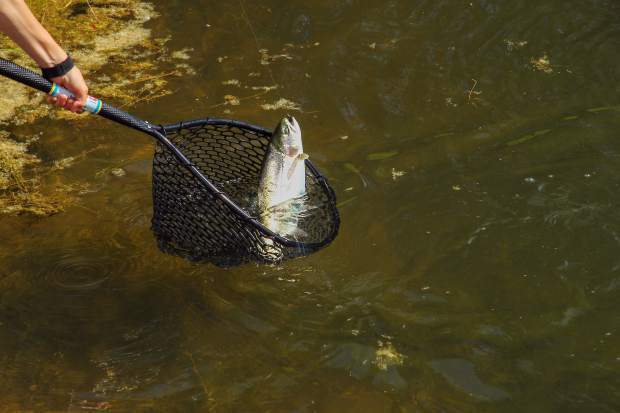We all have our favorite fishing spots that we consider to be the best, or our personal hot spots. However, this summer, the Eagle River Valley has more hot spots than usual. Unfortunately for anglers, this doesn’t mean the river is overflowing with rainbows, cutthroats or brookies. Instead, this means that the river is heating up — in temperature.
The quality and quantity of aquatic life in our local waters is drastically determined by water temperature. The aquatic organisms of the Eagle River Valley, including plants, aquatic insects and, of course, our trout are adapted to living within specific cold temperature ranges. As you measure the water temperature at your favorite fishing spot, and the mercury of your thermometer edges past 68 degrees Fahrenheit, dangerous conditions become a reality for the trout.
Stressed Fish
Increased temperatures make the fish stressed, leading to an increased susceptibility to disease and crippling their ability to compete for limited resources. High water temperature also influences the amount of oxygen that is available for fish respiration because as water temperature increases, the amount of oxygen that dissolves in the water decreases.
The increase in water temperature here in the Eagle River Valley has been exacerbated by Colorado’s dry 2017-18 winter and an abnormally dry summer, leaving our waterways more shallow than usual. As a result of the warming waters, resource managers, nonprofits, and fly-fishing industry professionals throughout Colorado are leading a voluntary “Hot Spots for Trout” alert. As an angler, there are a few best practices that you can follow under these conditions to help reduce the amount of angling-related mortality of your favorite trout species.
Practices include:
- Fish early: Water temperatures in the local waters are highest in the late afternoon and evening. Please aim to complete your angling adventure by 2 p.m. daily.
- Handle with care: Fish should always be handled with extreme care, especially when water temperatures increase. This includes wetting your hands prior to touching the trout, as well as using barbless hooks to facilitate a quick release. When taking that perfect fish picture to corroborate your fish story when you get home, try to keep the fish in the net or use a waterproof camera to take the picture of the fish in the water.
- Go higher: Under the current conditions, anglers are advised to fish at higher elevation lakes and streams where waters are cooler. According to Vail Valley Anglers, Deep Lake, Nolan Lake, Missouri Lakes, Turquoise Lakes, Beaver Lake, Booth Lake and Gore Lake are great places to start.
- Carry a thermometer and volunteer: Anglers should carry a thermometer to know water temperatures throughout the summer. The Roaring Fork Conservancy in Basalt and Colorado Parks and Wildlife have created the Hot Spots for Trout citizen monitoring program. By collecting stream temperature data, you can help locate areas of concern for trout. To volunteer and input your data, visit http://www.roaringfork.org/drought/hot-spots-for-trout. Colorado Parks and Wildlife will utilize this data to implement best management practices, including emergency closures, to protect the vital ecosystems.
The 2018 fishing season is in full swing here in the Eagle River Valley. So far, fishing has been great with prolific insect hatches. However, our local waters are experiencing unusually low flows and higher water temperatures. It is imperative that we all follow the best practices to help support the healthy future of our rivers. For additional information on current conditions, low-impact fishing methods and where to find fish friendly fishing spots, visit your local fly shop.
Jaymee Squires is the director of graduate programs at Walking Mountains Science Center in Avon.
Originally posted at Vail Daily By Jaymee Squires on Jul 15, 2018 .


